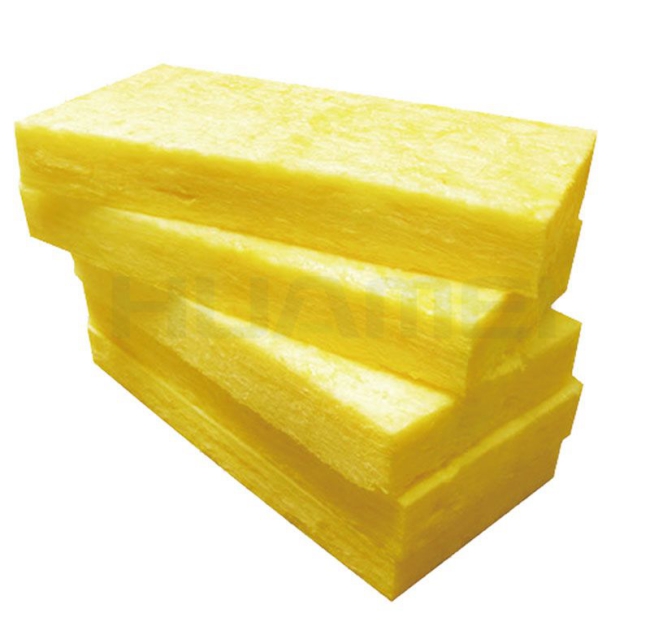The sound absorption performance of centrifugal glass wool is also closely related to the installation conditions. When there is an air layer behind the glass wool board, the sound absorption effect is similar to that of a glass wool board with the same thickness without an air layer. In particular, the sound absorption performance of medium and low frequency will be greatly improved than the material is attached to the hard bottom surface. The sound absorption coefficient will increase with the increase of the thickness of the air layer, but the effect will not be obvious after increasing to a certain value. Using glass wool of different bulk density is stacked together to form a form of gradually increasing bulk density, which can obtain a greater sound absorption effect. For example, stacking a 2.5cm thick 24kg/m3 cotton board with a 2.5cm thick 32kg/m3 cotton board will have better sound absorption than a 5cm thick 32kg/m3 cotton board. The 24kg/m3 glass wool board is made into a 1m long wedge with a triangular cross-section. The surface density of the material gradually increases, and the average sound absorption coefficient can be close to 1.

Glass wool is a product made by using unique centrifugal technology to fiberize molten glass and add an environmentally friendly formula binder mainly composed of thermosetting resin. It is a product made of glass fibers with a diameter of only a few microns. Flexible glass fiber products, and can choose moisture-proof veneer online composite according to the different requirements of customers. Because it has a large number of tiny air gaps, it plays the role of heat preservation, sound absorption, noise reduction, and safety protection. It is a building The best material for thermal insulation, sound absorption, and noise reduction. Unique advantages, unique technology, the rebound rate after compression packaging is 99.2%. The soft and slender glass fiber minimizes flying floc during construction.
Construction application:
In the use of centrifugal glass wool in construction, the surface often needs a certain sound-transmitting finish, such as plastic film less than 0.5mm, metal mesh, window screening, fireproof cloth, glass-silk cloth, etc., which can basically maintain the original sound absorption characteristics. Centrifugal glass wool has excellent characteristics such as fire resistance, heat preservation, and easy cutting. It is one of the most commonly used materials for building sound absorption. However, since the surface of the centrifugal glass wool is not decorative and the fibers are scattered, it must be made into various sound-absorbing components for concealed use.
The above information is provided by pipe glass wool supplier.
评论
发表评论